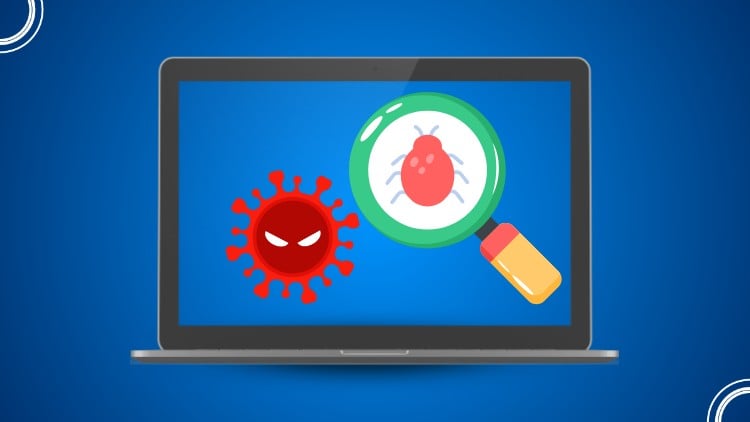
Learn basic static and dynamic malware analysis with easy to follow instructions
⏱️ Length: 2.4 total hours
⭐ 4.26/5 rating
👥 14,597 students
🔄 September 2025 update
Add-On Information:
Note➛ Make sure your 𝐔𝐝𝐞𝐦𝐲 cart has only this course you're going to enroll it now, Remove all other courses from the 𝐔𝐝𝐞𝐦𝐲 cart before Enrolling!
- Course Overview
- This introductory course provides a foundational exploration into the world of malicious software, designed for individuals with little to no prior experience in cybersecurity or threat analysis. It demystifies the initial steps of understanding how malware operates, equipping learners with essential techniques to begin unraveling its secrets. The curriculum ensures a gentle yet comprehensive entry into a critical domain of digital defense, fostering an analytical mindset crucial for confronting evolving cyber threats.
- Through practical, guided exercises, the course cultivates a fundamental understanding of malware’s operational characteristics and behavioral patterns. It emphasizes a hands-on approach, allowing students to apply theoretical knowledge immediately to simulated real-world scenarios. This ensures concepts are actionable skills, laying a robust groundwork for further specialization in incident response, threat intelligence, or reverse engineering.
- Requirements / Prerequisites
- A fundamental grasp of basic computer operation and navigating file systems. Familiarity with operating systems will be beneficial, though no prior cybersecurity expertise is assumed.
- Access to a personal computer capable of running virtualized environments, crucial for establishing a secure, isolated workspace for safely examining malicious samples.
- An inquisitive mind and a strong desire to understand cyber threat mechanisms, encouraging a problem-solving attitude and willingness to explore technical details.
- Skills Covered / Tools Used
- Malware Analysis Fundamentals: Gain proficiency in preliminary investigation techniques for digital artifacts, understanding their properties and potential malicious intent through signature-based detection and fundamental structural analysis.
- Secure Lab Setup: Acquire the knowledge to establish an an isolated and controlled environment, essential for safely interacting with potentially hostile executables without compromising your host system.
- Executable Dissection & Behavior Monitoring: Learn to interpret Windows executable formats, identifying key sections and dependencies. Develop the ability to observe and log runtime actions, including process interaction, network communications, and system modifications.
- Evasion & Persistence Recognition: Understand common strategies like packing and obfuscation used by malware to hide its nature. Examine methods malware uses to ensure its continued execution across reboots.
- Automated Behavioral Sandboxing: Utilize online platforms that execute malware in a controlled cloud environment, providing comprehensive reports on its activities, network connections, and system impact for quick preliminary assessment.
- Benefits / Outcomes
- Upon completion, you will possess a solid entry-level understanding of malware analysis principles, enabling confident initial examinations of suspicious files.
- Develop a robust analytical framework for dissecting malware, empowering you to identify key indicators of compromise (IOCs) and articulate basic functionalities for effective threat detection.
- Gain the practical ability to set up and manage a secure analysis environment, a fundamental skill preventing accidental infection and ensuring safe handling of dangerous samples.
- Enhance your understanding of operating system internals and software interaction, providing a deeper appreciation for system security and potential vulnerabilities.
- This course serves as an excellent foundational credential, signaling proactive engagement in specialized cybersecurity domains and readiness for advanced topics.
- PROS
- Highly Rated and Popular: A 4.26/5 rating from 14,597 students attests to proven effectiveness and widespread satisfaction, indicating high-quality instruction and valuable content.
- Beginner-Friendly Approach: Designed for newcomers, the course ensures concepts are presented with “easy to follow instructions,” making complex topics accessible and manageable.
- Concise and Efficient Learning: At just 2.4 total hours, it offers a high-impact learning experience, delivering essential skills without lengthy commitment, perfect for busy individuals.
- Up-to-Date Content: The September 2025 update ensures material reflects current practices and relevant tools, providing pertinent information.
- Practical Skill Development: Focuses on hands-on application of static and dynamic analysis techniques, equipping students with immediately usable skills.
- CONS
- The brevity of the course (2.4 hours) means it primarily serves as a high-level introduction, necessitating further self-study or advanced courses for in-depth expertise and comprehensive skill mastery.
Learning Tracks: English,IT & Software,Network & Security
Found It Free? Share It Fast!